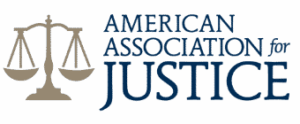
As April comes to an end we don't want to miss the opportunity to comment on the critical issue of child abuse prevention which this month has been designated towards. April has been recognized as child abuse prevention month since 1983 and similar to sexual assault awareness month (also recognized in April) many facilities across the country work to prevent instances of abuse and create awareness through education of the public.
A child is considered anyone under the age of 18. Child abuse can come in a variety of manners, yet all result in devastating effects on the victims. Listed below are the most common forms of child abuse and their descriptions.
All of these types of abuse are extremely serious and carry with them heavy penalties. The statute of limitations for child abuse varies from state to state so if you suspect someone you care about is being harmed, it is in their best interest to act quickly. For more information on individual state statute of limitations visit AbuseGuardian.com.
According to the CDC, one in four children suffer from some form of child abuse. In 2014, there were approximately 702,000 confirmed cases of child abuse or neglect in the United States. This large number has a profound effect on the victims not only immediately but continuing on into their adult years. Abuse can disrupt early brain development. In addition, serious chronic stress can harm the development of the nervous and immune systems. Abused children are at a much higher risk for future health problems as adults.
The effects of neglect and abuse can branch out to be physical, psychological, and behavioral. According to the CDC, one long-term study conducted on victims of child abuse discovered that 80% of individuals met the diagnostic criteria for at least one psychiatric disorder by the age of 21.
These effects are not only felt by the victims but by society as a whole. Economically child abuse is very expensive. Medical costs and loss of productivity add up quickly. A lifetime economic burden of child abuse was an approximate $210,012 in 2010 dollars. It becomes clear that by simply just a financial standpoint child abuse needs to be prevented.
Children are some of our society's most vulnerable members, so we have an obligation to do everything we can to protect them. One way to do this is to be aware of the signs and symptoms that a child may present which would indicate they are being abused. Some children may not even be aware that what is happening to them is a problem so we need to be able to read their behavior. Children who are abused may show signs such as:
According to The National Child Traumatic Stress Network, there are certain factors that research has shown to reduce and prevent child neglect and abuse. These factors include parental resilience, social connections, concrete supports for parents, parental knowledge about child development and parenting, the social and emotional competence of children, and nurturing and attachment.
A community needs to invest in its children in order to ensure the future generation will be healthy and prosperous. Several communities have hosted various educational events aimed at preventing child abuse, yet there are things that families can do every day to promote health and well-being in their children. Healthy relationships can act as a buffer against adverse childhood experiences and they are necessary for the emotional well-being of a child. Some suggestions for families are:


